Fleas. Ticks. Doesn’t your skin begin to crawl just thinking about them?
In this post, you’ll learn more about these diminutive demons. And how to use the Best Flea and Tick Prevention for Dogs to vanquish them!
Few of us have actually read ‘The Art of War’ by Sun Tzu but most of us are familiar with this quote:
“know yourself, know your enemy, and you shall win a hundred battles without loss“
Affiliate Disclaimer
1 The Fearsome Flea
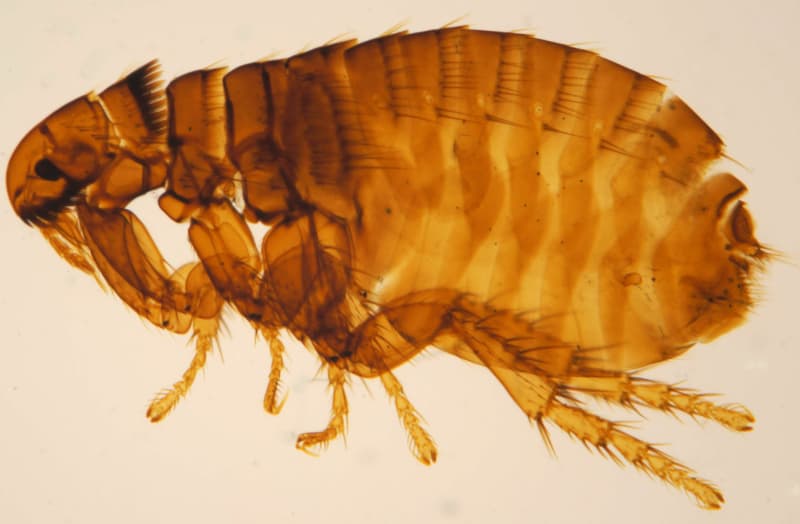
1.1 Flea – Introduction
Flea is the common name for the order Siphonaptera.
The order contains around 2,500 species of small (around 3mm) flightless insects that survive as external parasites of mammals and birds.
Fleas survive by consuming the blood of their host animal. They have strong claws that make it difficult to dislodge them and specialised mouthparts to facilitate blood consumption.
Fleas have a well-deserved reputation for being good at jumping. They are able to jump around 100 times their body height. This is facilitated by their powerful hind legs.
The Dog Flea (Ctenocephalides canis) is a species of flea that, as its name suggests, lives primarily on dogs. However, fleas are not species-specific and very often a dog will be found to have Cat Fleas (Ctenocephalides felis) rather than Dog Fleas.
1.2 Flea – Life Cycle
There are 4 stages to the life cycle of the flea:
- Egg
- Larva
- Pupa
- Adult
Egg. The number of eggs laid depends on the species, and ranges between 2 and several dozen. However, note that in the lifetime of an adult female flea it can lay several thousand eggs! The eggs are laid either directly on the host or in areas where it typically nests. The eggs hatch after 2-14 days (depending on conditions).
Larva. After emerging from the eggs the larvae feed on any available organic material. They are blind and will avoid sunlight, preferring dark and humid environments (including carpets and bedding). This stage lasts 4-18 days.
Pupa. After consuming sufficient food, the larvae pupate. Within the cocoon, the larvae metamorphosise into adult form.
Adult. The primary objectives of the newly hatched adult are to find blood and to reproduce. The adult flea typically lives for 2-3 months (although without a host’s blood it can die within days).
1.3 Flea – Impact on Hosts
OK, so the very fact that fleas attach themselves to a host and drink their blood may seem bad enough but what other potential impacts are there?
Going it alone
On their own, fleas can cause an itching sensation in a host, causing a desire for biting or scratching to relieve the sensation.
However, the flea bites also cause swelling and irritation at the site of each bite and this can result in an itchy skin disease called flea allergy dermatitis (the allergic reaction is to the flea saliva). Symptoms include hair loss and rashes.
In extreme cases, fleas can cause anaemia.
With some help
As unpleasant as the above sounds, things get a whole lot worse when we consider the role of fleas as agents in transmitting pathogens.
Fleas can transfer viral and bacterial diseases, and various parasites (including tapeworms).
The most well-known example of this is probably the spread of the Bubonic plague at various times in history (during the Black Death pandemic it is estimated that it killed a third of the population of Europe).
2 The Terrible Tick
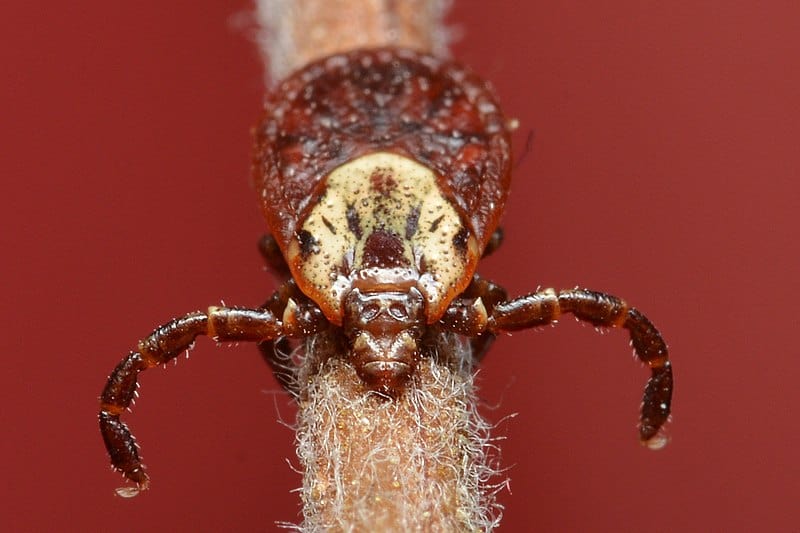
2.1 Tick – Introduction
Tick is the common name for the order Ixodida.
The order contains around 900 species of small (around 3-5mm) arachnids that survive as external parasites of mammals and birds (and sometimes reptiles and amphibians too).
Ticks have pear-shaped bodies that become greatly engorged when they consume the blood of their hosts (their weight increasing between 200 – 600 times). They locate their potential hosts by sensing odour, heat, moisture, or vibrations in the environment.
Note that, unlike fleas, ticks are not able to jump (nor fly). They tend to lay in wait on leaves or grasses, with their front legs raised in the air waiting to grasp a passing host – this is known as questing.
Have you heard the expression ‘Dug in like a tick.‘?
It means that something, or someone, is deeply entrenched and would be very difficult to remove. And the basis for the expression is that once a tick gets its mouthpiece into a host it is pretty difficult to remove it because of all the hooks that are used.
If you want to see exactly how this works take a look at the following video (It’s pretty gruesome!)
2.2 Tick – Life Cycle
Whilst there is some variation among tick species as to how many hosts (varying from 1 to 3) are used during the life cycle, the stages themselves are the same.
The 4 stages to the life cycle of the tick:
- Egg
- Larva
- Nymph
- Adult
The adult tick lays between several hundred and several thousand eggs in its preferred environment.
The eggs hatch into larvae which immediately begin to seek a host to attach to and feed on.
Once fed the larvae turn into nymphs which remain on the host. The nymphs also feed on the blood of the host and then turn into adults.
The adults then, you guessed it, feed on the blood of the host before leaving the host and looking for somewhere to lays its eggs.
2.3 Tick – Impact on Hosts
The direct impact, of course, is the loss of blood caused by the unpleasant Dracula impressions.
If you want help visualising just how much blood a tick consumes take a look at the Before and After pictures below.
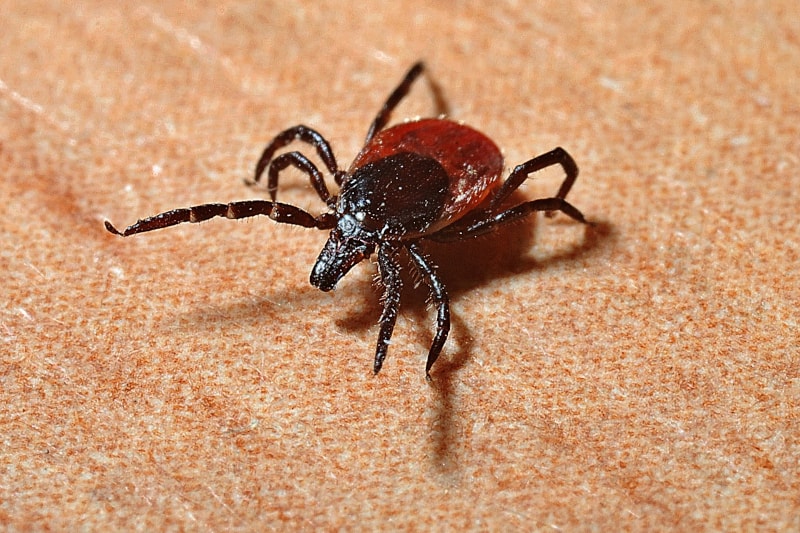
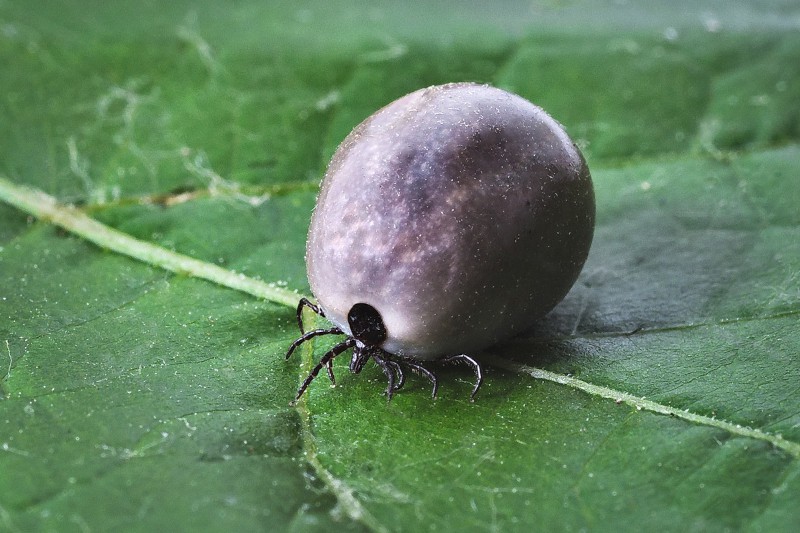
Now, you may be thinking ‘Come on, ticks are tiny. Losing a small amount of blood can’t be too bad.’
This is true.
However, imagine multiple ticks on a single host – all of them consuming its blood at the same time. It has been known for ticks attacking en masse to kill animals as big as cows by exsanguination!
Furthermore, as with fleas, ticks are transmission agents for a number of pathogens.
The potential infections are numerous but include both typhus and Lyme disease.
As if that wasn’t bad enough, some species of tick are also venomous and can cause paralysis.
And they are a common cause of tapeworms.
3 Best Flea and Tick Prevention for Dogs
So, now that we know a little more about our enemies, let’s consider how we deal with them. There are 2 elements to this:
- Flea and Tick Prevention
Let’s look at what we can do to avoid having these creatures take up residence in the first place. - Flea and Tick Treatment
Either they got by the prevention somehow or you didn’t take any preventative steps (don’t make the same mistake twice!).
OK, let’s look at the steps that we can take to prevent flea and tick problems.
3.1 Medicinal Treatments
These come in 3 main varieties:
- Topical. The treatment is applied directly to the skin – usually at the back of the neck to reduce the chance of the dog licking it.
- Tablets. The treatment is given to the dog orally.
- Collar. The dog wears a collar that contains the preventative substance.
Topical applications include the ‘Big names’ in flea and tick treatment such as Frontline Spot On (Note that the linked item is for dogs that are 20-40kg, like our Labrador Harvey. If your dog is a different weight scroll down to the ‘Compare with similar items’ section and select the appropriate item.)
The key player in flea and tick prevention through tablets is Bravecto. Note that the nature of this treatment is such that it can only be obtained with a prescription from a vet.
The good old flea collar has been around for a long time. The collars are effective and are also designed to be waterproof.
Note that it has been suggested that ultrasonic flea collars could be used to keep fleas off pets but I have not been able to find any evidence that this is effective.
If you are in any doubt I would recommend discussing the matter with your vet to see what their preferred treatment is. This is particularly so in the case of puppies due to their age and size.
3.2 Natural Treatments
For some dogs, the above treatments aren’t an option because they have a bad reaction to them.
And some owners, have concerns regarding the potential side effects of these powerful treatments.
For example, whilst nothing has yet been proven there has been a class action filed against the manufacturers of Bravecto. And there are concerns relating to the flea collars manufactured by one supplier.
In these cases, there are also natural remedies that can be used in the fight against fleas and ticks.
One of the most popular such treatments is Billy No Mates (love that name!). It uses natural ingredients which fleas and ticks find repellent. Keep in mind that it takes a few weeks to become fully effective. In the USA you may like these chewable treats as an alternative if you can’t find BNM.
Also, keep in mind that many essential oils can help to repel fleas and ticks.
These include:
- Lavender
- Lemongrass
- Citronella
- Cedarwood
- Sandalwood
- Rosemary
- Clove
- Oregano. Studies have shown oregano oil to be excellent in combatting ticks.
- Spearmint
The essential oils need to be diluted and used in a ‘carrier’ oil such as coconut oil.
Now, that said,the simplest way to make use of these is probably to use a soap or shampoo that incorporates them.
We’ve recently tried the soap at The Dog and I and can thoroughly recommend it. If you take a look at the product descriptions you’ll see that they incorporate coconut oil with lavender, lemongrass, citronella, and spearmint. So, you get a clean dog, a nice smell, and fleas and ticks are repelled. WIN, WIN, WIN!
You can even go the DIY route and make your own solutions:
3.3 Physical Inspection

Imagine that your dog is a nightclub and you are the bouncer. Your job is to identify any undesirables and turn them away.
The difficulty of this task will depend, in part, on your dog’s coat – the shorter and smoother the coat, the easier it is to spot anything that shouldn’t be there. Of course, the colour of the coat also has an impact here – because fleas are dark in colour, white is the easiest and black is the toughest.
You can make things easier here by employing a specialised flea comb. This will make it easier to spot fleas – either the fleas themselves, their eggs or their waste.
Remember to check the spots where fleas and ticks seem to know that it is difficult for the host to get at them – head, ears, eyelids, armpits, between the toes, tail.
3.4 Manage the Environment
The second most favourite place for fleas and ticks, after their chosen host, is the host’s bedding. You should regularly wash bedding to reduce the risk of any infestation.
If you have a garden that your dog uses then you may need to manage this too. Avoid having the dark, moist areas that fleas and ticks like to frequent. Also, given what we know about ticks and questing, try to keep your grass on the short side.
When you take your dog for a walk, be aware of the environment. If your dog runs through long grass, or rolls in a dead bird carcass (yuk!), then be sure to thoroughly check them over when the walk ends – the sooner your remove any pests, the better.
You should also consider your clothing when you are walking in areas known to have lots of ticks – don’t make yourself a target for questing ticks! Shoes or boots, not sandals. Long trousers (tucked into socks to be extra safe!), not shorts/skirts. Long-sleeved shirts/blouses, not T-shirts or vests. Light colours are useful as it makes it easier to spot the ticks.
You may find it helpful to consult a ‘Map of tick risk‘ to establish which UK geographical areas ticks are more prevalent in. If you are outside of the UK then use Google, or your preferred search engine, to find maps relevant to your country.
4 Best Flea and Tick Treatment for Dogs
Right, so either our prevention methods failed or we (foolishly!) didn’t take any preventative measures.
What do we do now?
4.1 Fighting Fleas

The treatment for fighting fleas is very similar to that for flea prevention. We just ramp things up a level!
Keep in mind that you are fighting a battle on 3 fronts:
- Dog
- Home
- Outside
Dog. OK, you could use a flea comb, like the one we mentioned in the previous section, and drop the removed fleas into a bowl of soapy water. However, I think that this would be quite a slow process and, because of that, not hugely effective.
A more effective method is likely to be the use of flea shampoo. Follow the manufacturer’s instructions for use.
You can also give the fleas a double-whammy by using one of the preventative measures, too.
Home. Next, you need a deep clean of your house. Definitely do anywhere that your dog goes but, to be on the safe side, probably everywhere as you may have inadvertently spread the fleas yourself!
Start with the obvious places – your dogs bedding, rugs and blankets, and any favourite resting spots.
Use a vacuum cleaner on all carpeted areas – and immediately throw away the contents afterwards otherwise the fleas will harness their inner Harry Houdini! This is likely to need repeating on a regular basis until you are sure the war is won!
You may also wish to use a steam cleaner on the carpets if you have easy access to one.
Now, after that initial assault, it’s time to follow-up with a good flea spray. You may wish to use one of your pandemic face-masks while you are spraying so that you don’t inhale any of the spray.
An alternative to the spray option is to use a flea room fogger. You activate these foggers and leave them in the designated area to do their thing (kill the fleas!). As with the other products, read the manufacturers recommendations carefully – it is likely that you will need to vacate the room for a couple of hours.
Outside. Fleas, and especially flea larvae, like shaded, humid areas. So, in your garden, keep your grass cut short and your plants well pruned. Clear away any old debris and waste and dispose of it. Expose them to the elements, be it rain or shine!
You may also want to think about discouraging wildlife visitors to your garden for a while – many of them are basically a taxi service for fleas and ticks, dropping them off in your garden ready to find the next party hosts (you and your dog!).
Remember, if your dog travels in your car then you need to take action in there too.
4.2 Tackling Ticks
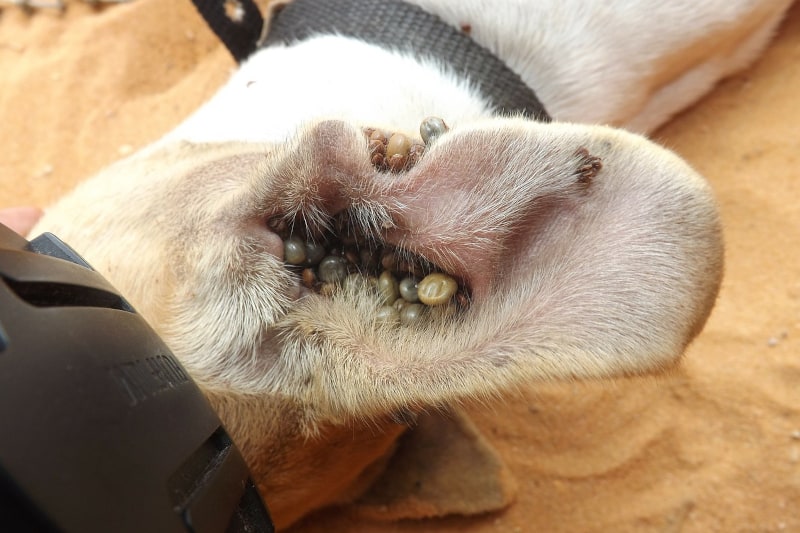
There are many folk remedies and supposed ‘miracle hack’ methods for removing ticks.
Guess what?
They don’t work!
Not only that but they actually increase the risk of the tick infecting the host with all of the lovely things discussed earlier.
So, before we move on to what to do, this is what you DON’T do:
- Smother the tick in petroleum jelly (whether or not its skin looks dry!)
- Apply baby oil to it (regardless of what stage in its life cycle it is at!)
- Coat it with nail varnish or nail varnish remover (either on their own or one after the other!)
- Burn it with a match, lighter, cigarette, soldering iron (or flame-thrower!)
- Freeze it with an ice cube (or dry ice!)
- Put alcohol on it (with or without the ice cube from above)
Ok, so what DO you do?
You remove the tick(s) as soon as possible after spotting it. Whilst some people are adept at doing this with bare hands the recommended approach is to use tweezers or a tick remover tool (ideally while wearing disposable gloves in order to minimise the risk of becoming infected yourself).
Now, as quick as Amazon deliveries are (especially with Prime), you don’t really want to be waiting for a delivery before you can take action. So, plan ahead! Buy some basic tools now (you could even use the opportunity to make your own canine first aid kit).
To remove the tick with tweezers, grasp it low down on its mouthparts, close to the point where it is connected to your dog. Then pull it straight out using firm pressure.
Do not twist or jerk the tick – the last thing we want is to leave behind the mouthparts embedded in the dog, as this may cause the tick to expel infected fluid into it.
If you are using a tick removal tool, rather than tweezers, then read the manufacturers instructions carefully. You will probably find that the recommendation is that you do twist the tool as part of the removal process.
Do not be tempted to crush the tick in your hand in an attempt to exact some sort of revenge! Again, we do not want infected fluid being spread around. Instead, just place the tick inside a screw-top jar (this enables you to take it to your vet if it becomes necessary to analyse it).
Where possible, consider enlisting the help of a partner to help calm the dog while you are carrying out the removal process. The calmer the dog, the easier your job will be.
Once finished with the removal process, disinfect the bite area on your dog, then bin your gloves and wash your hands thoroughly as an added precaution. Then sterilise your tick removal equipment ready for next time!
The following 2 videos show tick removal with tweezers (albeit from a human rather than a dog!) and then with a tick removal tool.
5 Best Flea and Tick Prevention for Dogs – Conclusion
So, having looked at:
- Why fleas and ticks are so undesirable (both for our dogs and for us)
- The best flea and tick prevention for dogs, and
- The best flea and tick treatment for dogs (in case the prevention failed)
What conclusions can we draw?
- Whilst having a minute vampire attached to you or your dog is fairly unpleasant in itself, the real danger lies in the ability of fleas and ticks to transmit a range of undesirable pathogens.
- Taking a range of preventative measures can greatly reduce the risk of fleas or ticks taking up residence.
- The rapid removal of any fleas or ticks that manage to survive the preventative measures will help to minimise any health risks.
- The removal methods themselves are pretty straightforward. However, as with all matters concerning the health of your dog, if in any doubt – consult your vet!
At the risk of tempting fate, our Labrador Harvey has never had ticks or fleas.
I put this down to the fact that the incidence of these pests is pretty low in the area that we live in, we have always used preventative measures outside of the winter season (initially Bravecto tablets but in more recent years Billy No Mates), and Harv has a short, light-coloured coat that is regularly brushed.
We do have, as part of our precautionary measures, both a flea comb and a tick tool in case they are ever needed.
6 Frequently Asked Questions
Here are some FAQs related to the Best Flea and Tick Treatment for Dogs. If you have any questions that you’d like to ask please let me know in the Comments section below.
Which Dog Flea and Tick Control is Best?
The best flea and tick prevention for dogs is the one that you use! That is, make your choice and use it appropriately. Correspondingly, the worst option is doing nothing at all. Whichever treatment you choose, remember that you should still check your dog for fleas and ticks on a regular basis – the sooner any ‘super pests’ that manage to survive the treatment are spotted the easier it is to get rid of them.
What Months Should you Give Your Dog Flea and Tick Medicine?
Fleas and ticks are, generally, less prevalent during the colder months of the year. Therefore, many owners give their pets a rest from treatments during these months and then re-introduce them as the temperature begins to rise again. In the UK, for example, you might start treatment in April/May and then stop again in October/November.
What do Vets Recommend for Fleas and Ticks?
It will depend on where you live, the age and health of your pet, and what personal preferences the vet has (as with many things, opinions vary). For example, some treatments will not be appropriate for very young puppies. And some dogs are less tolerant of certain treatments than others and may require natural remedies.
Why do Some People Seem to be More Attractive to Fleas Than Others?
Creatures that feed on the blood of host animals are attracted to chemicals released from the host’s body. The chemical mix varies from person to person and it is this difference that determines the relative popularity with fleas. People also react differently to the saliva of the flea when it bites, with some developing an allergic response.
Can I Use the Same Flea and Tick Treatment for my Dog and Cat?
No! Different products, or strengths of products, are required for dogs and cats. Mixing them up could make your pet very ill, or even kill it. If in doubt, discuss with your vet before use.
7 Acknowledgements
Image acknowledgements:
And …
8 The End
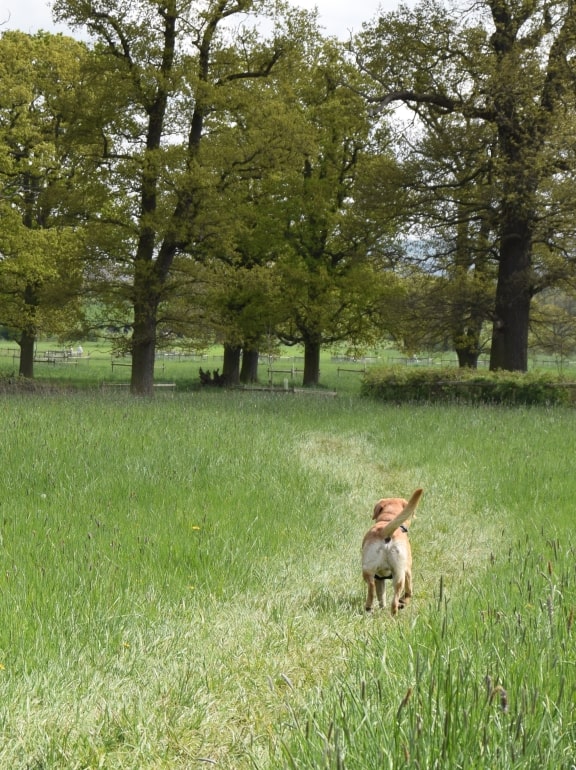
I hope that you’ve enjoyed this post.
Feel free to navigate around the site to see if there is anything else that may be of interest to you.
If you liked this post please share it. Thank you 🙂
If you’d like a heads-up when the next post is issued sign-up to the Richie’s Room Newsletter.
And, if you’d like to add a comment that would be great too – you can do that below.

I used to remove the tick with bare hands and wash it after that (of course!). I and my mom will have a bowl with water and put the ticks in there then throw it down the drain in the bathroom. Now I know that we need the basic tools for that. Thanks for this post, it’s really helpful x
Hi Merry. Thank you for your feedback. I think that you need to be pretty well-practised to do it with just your bare hands – most people will need a tick tool or tweezers 🙂
This was such an interesting read! I luckily had issues with fleas few times with our dogs during the years, but glad to read and get informed more on it! I didn’t know they could cause in dangerous cases anaemia. My mum has been using a natural flea spray and it works wonders! Thank you for sharing!
Hi Cristina, thanks for your comment. Yes, they’re nasty little critters! I’m glad that the natural approach is working for your mum.
A really interesting post, I have friends who own dogs and this post would be ideal for them! x
Lucy
Thanks, Lucy, much appreciated. If you would share the post with your friends that would be great, thanks.
Eeeeek this kinda thing totally creeps me out – I’d be rubbish if we ever had a dog and had to deal to with this! xx
Hi Alice. Eeeeek indeed – they are pretty gruesome, aren’t they?
We’ve been lucky with our dog in the sense that we’ve only had to remove 2 ticks from her. I didn’t actually realise the size difference from a tick pre & post blood. That’s actually insane!
Claire.X
Thanks for your comment, Claire. Yep, it puts human over-eating at Christmas into context, doesn’t it? 😉
My sister has struggled with ticks and her little doggy. Her dog loves to explore and get down into grass piles where ticks live. Great tips, very helpful!
Rosie
Hi Rosie. Thanks for your comment. Dogs are inquisitive creatures! I think it’s fine if they want to go exploring now and then – you just have to be diligent with the post-walk checks 😉
Excellent post. Really interesting and thorough, as ever.
Thanks, Graham, much appreciated.
Really informative post this Richie.
Great read. Thankfully my woofer hasn’t had either yet
Hi Damion. I’m glad that you liked it. Yep, not getting them at all is the preferred option 🙂
We use flea and worm treatments on our cats regularly because one of them eats mice and we don’t want him spreading anything to the other two. And I’ve had to remove ticks from one of the them too, with a tick removing tool, then drop them into neat gin (sob) so I could show the vet in case the wound got infected, which luckily it didn’t. The perils of keeping pets!
Thanks for your comment, Lisa. Yes, I think the tick removal tool seems to be the preferred method for most people. And drowning in gin – what a great way to go! 😉
Good informative post! I learned about fleas from this post. Last time I used to study about cat fleas. At that time I have a cat. But that was long time ago. So now I forgot about fleas. Thank you for sharing.
Hi Fadima. Thanks very much for your comment.
Wow! This is very in-depth! One of my previous cats had died after eating a tick so I found this post helpful, and I’m glad to know you’re helping others prevent ticks. Thanks for sharing.
Thanks for your feedback, Alexis. Much appreciated. Sorry to hear about your cat – ticks are horrible things!
This is such a helpful post. I feel very lucky that I’ve always been able to prevent fleas and ticks from my dog. She’s 8 years old and hasn’t had any issues.
Hi Kelly. Thank you for your comment, I’m glad that you found the post to be helpful. Yes, we’ve been lucky with our dog too (touch wood!).
Nope nope nope nope nope, I did not need to read that, now I can’t stop thinking about bugs crawling all over me again 😂
I guess I won’t be owning a pet again any time soon so I don’t have to deal with any of these blood sucking itchy nightmares again.
Nevertheless, thanks for sharing the tips so people’s pets don’t suffer
Hi and thanks for your comment 😉 Bloodsucking itchy nightmares indeed!
Hello Richie,
What an informative post! I have learned a lot of ticks and people with dogs must read this. I cannot stop looking at that photo of that dog’s ear infested with tick. I just want to remove them with my bare fingers.
I do not have a dog yet, but I am considering to adopt one. It is just not easy to get a dog here in the Netherlands. The waiting lists are long. But while I am waiting, I m already educating myself and your website is very useful in the process.
Ray
Hi Ray. I’m pleased that you found the post to be informative. Yes, the photo illustrates very well just what a problem ticks can be. Good luck with adopting a dog – I’m sure that you will enjoy having a dog 🙂
A wee bit grossed out by some of the imagery here, but it gets your point across about the unwelcome nature of ticks and fleas to perfection!
I love essential oils as a way to battle fleas. Living where I do in the mountains too, I have two sets of tweezers on hand because sometimes I have to do more than remove ticks from my canine friend.
Thanks for sharing a great mix of more modern and natural ways to prevent ticks and fleas, as well as some handy visual guides. 🙂
Thanks very much for your comment, Jaya. Yeah, those little critters are not the sort of visitors that you want to be entertaining!
Thank you for sharing this really informative post. I’ve never had a dog, but my partner and his family do. I don’t think fleas or ticks have ever been a problem, but this post has been really eye opening. These are great tips for those who do have a dog and I love the mix of different remedies you’ve given. I’ve only ever heard of the tweezer method, but I love that you can use essential oils! Em x
Hi Em. Thank you for your feedback. By all means, share the content with your partner and his family – the more we can do to prevent flea and tick issues, the better.
This is a helpful post about fleas! Bloody hate fleas. Thank you for sharing this information and tips!
Lauren
Thanks for your comment, Lauren. Yeah, fleas are pretty horrible – but I think that ticks are worse.
I don’t have a dog currently but we are wanting to get one soon. So I will keep this information in mind for when we do! Thanks so much for sharing!
Hi Charity. Thanks for your feedback. I wish you luck in finding your future 4-legged friend 🙂
My dog has this thing you put on his fur once a month which prevents fleas and luckily he’s never had them in 10 years, so it must work! These are great tips 🙂
Hi Jenny. I’m glad to hear that your dog has been flea-free for 10 years – keep up the good work 😉
Don’t fleas just look absolutely horrible, it’s a shame some dogs get fleas! A very informative post Richie, some great information that you’ve posted.
Yes, Luke, they do – horrible little things. I’m glad that you enjoyed the post.
This is such an informative and helpful post! Thanks for sharing!
Thanks very much for your comment, Raji. Much appreciated.
Great article, I love discovering new info and fleas used to be the bane of my life when I had cats, not so much now with my dog. But he still gets treated and the house every spring and autumn.
Thank you, Lou, for your comment. Yeah, fleas can be a complete nightmare once they get a foothold.
Great post! Very informative. I didn’t know there are dog fleas and cat fleas. I’m definitely going to try some of the natural ingredients you listed here.
Hi Miche and thanks for your feedback. Yeah, there are, unfortunately, many different types of fleas.
really informative post, i never knew about essential oils as a preventative measure before. thanks for sharing.
Hi Bethany. Thank you for your comment. Yes, some essential oils can be very helpful.
I learnt a whole lot from this post. I don’t have a dog but these are fab tips. I didn’t know dogs could have ticks haha. I would definitely make use of this if the need arises.
Thanks for your comment, Ruth. Glad that you enjoyed the post – bookmark it for when you get a dog 😉
This is going to be so helpful for people with dogs, and to help prevent them!
Hi Amie. Thanks very much for your feedback.
Such an informative article! So much value. Thanks for sharing this.
Thanks for your feedback, Lomash. I’m glad that you found the post to be informative.
Great post! Lots of good information here, we’ve always managed to avoid fleas but my little guy picked up a tick last year, on his eyelid of all places! Checking your furry friends over is so important.
Thanks for your comment, Sophie. Ticks certainly do seem to pick out the toughest spots.
Such an informative post! And slightly disturbing 😄 That picture comparison of the tic before and after is shocking. I didn’t realize that tics and fleas could transmit tapeworm. That was interesting to learn.
Hi Alison. Thanks for commenting. Yep, ‘disturbing’ and ‘shocking’ about sums them up, doesn’t it?
We’ve got a flea and wormer from the vets which thankfully works perfectly on my dachshund! But this is really informative – thank you for sharing Xo
Elle – ellegracedeveson.com
Glad to hear that your treatment regime for your Dachshund is working well. Thanks for your comment, Elle.
Your posts are always so detailed and packed full of Information! I personally don’t have a dog (yet) but I’m hoping to get one this year or next year. Fleas give me the fear though, I always get so worried with my cat because we had them once when he was still a kitten and it was a pain to get rid of them. Will be bookmarking for when I get a dog to refer to. Thanks for sharing.
Hi Jordanne. Yes, they are a pain once they are in place – prevention is definitely the preferred route. Good luck with your new dog – let me know if you have any queries.
Looking at all those flea close ups I’m kind of happy that i don’t have a dog…
I know – they are fearsome-looking things aren’t they? Thanks for the comment, Carina.
Fleas are the worst and so disgusting. This is such a helpful post though xx
Hi Della. Yep, they’re pretty gruesome. Glad you found the post helpful.
I’ve only had one experience with fleas and that was with my cat! There really hard to deal with – thanks for sharing x
Yep, they can be an absolute nightmare to get rid of. Thanks for you comment, Kayleigh.
I just saw an episode of some vet show that had a poor dog who had a tick bite and had become seriously ill — I will be passing on this post to all the dog owners I know. Thanks for the info!
Hi Molly. Yeah, it can be really serious. Thanks for commenting on the post (and for passing it on).
Crazy enough, I’ve never had a dog in my life! Growing up, my sister was allergic, and then both my mom and dad had health issues so they needed more independent pets. Therefore, I’ve only had cats my entire life haha so I only know about flea and tick prevention for them. It sounds like it’s not a completely different set of guidelines to abide by, but it’s helpful to know this information for the future. My husband and I would love to have a dog one day 🙂
That’s right, its a very similar scenario for both cats and dogs. I hope you get the chance to have a dog 🙂 Thanks for your comment.
OH man, what a great read! Ticks and fleas indeed make me feel itchy even hearing/reading the word! Thanks for sharing this informative post. 🙂
Lynn | https://www.lynnmumbingmejia.com
Glad you enjoyed it, Lynn. It’s amazing how just thinking about them makes your skin crawl, isn’t it?
So informative! I have dogs so I’ve dealt with them have ticks and fleas. Didn’t know about the use of essential oils, gonna do more research on that. Great post!
TheQuietGirl | http://www.quietgirlblog.com
Hi Anissa. Thank you very much for your comment.
These are such great tips for flea and tick prevention. I don’t have a dog but will keep this in mind if we ever get one. Thanks for sharing.
Hi Charity. Thank you very much for your comment.
Ahh not ticks! We have prescription flea and tick drops for our cat so haven’t had to deal with any nasties yet!
Corinne x
Thanks, Corinne. Yeah, they’re pretty horrible, aren’t they? I’m glad that your cat is protected.
Wow this is packed with lots of information! I knew about ticks and the importance of removing them properly, but honestly didn’t know much else. Thanks for putting this together, this will be so helpful to many dog owners!
Hi Alex. You are most welcome – the more people that know about how to deal with fleas and ticks, the better.
What incredible detail. I love the review of essential oils and will keep an eye for them within products. Thanks for sharing,
Thanks Mark, your comment is much appreciated.
Hello Richie, wow! What an informative post as always. When I rescued a dog, the dog sadly had ticks and I struggled to find information to take them out, I wish I had this post! Thanks for sharing! Alicia
Hi Alicia, thanks very much for your comment. Yes, ticks can be tricky to remove if you don’t know a suitable method.